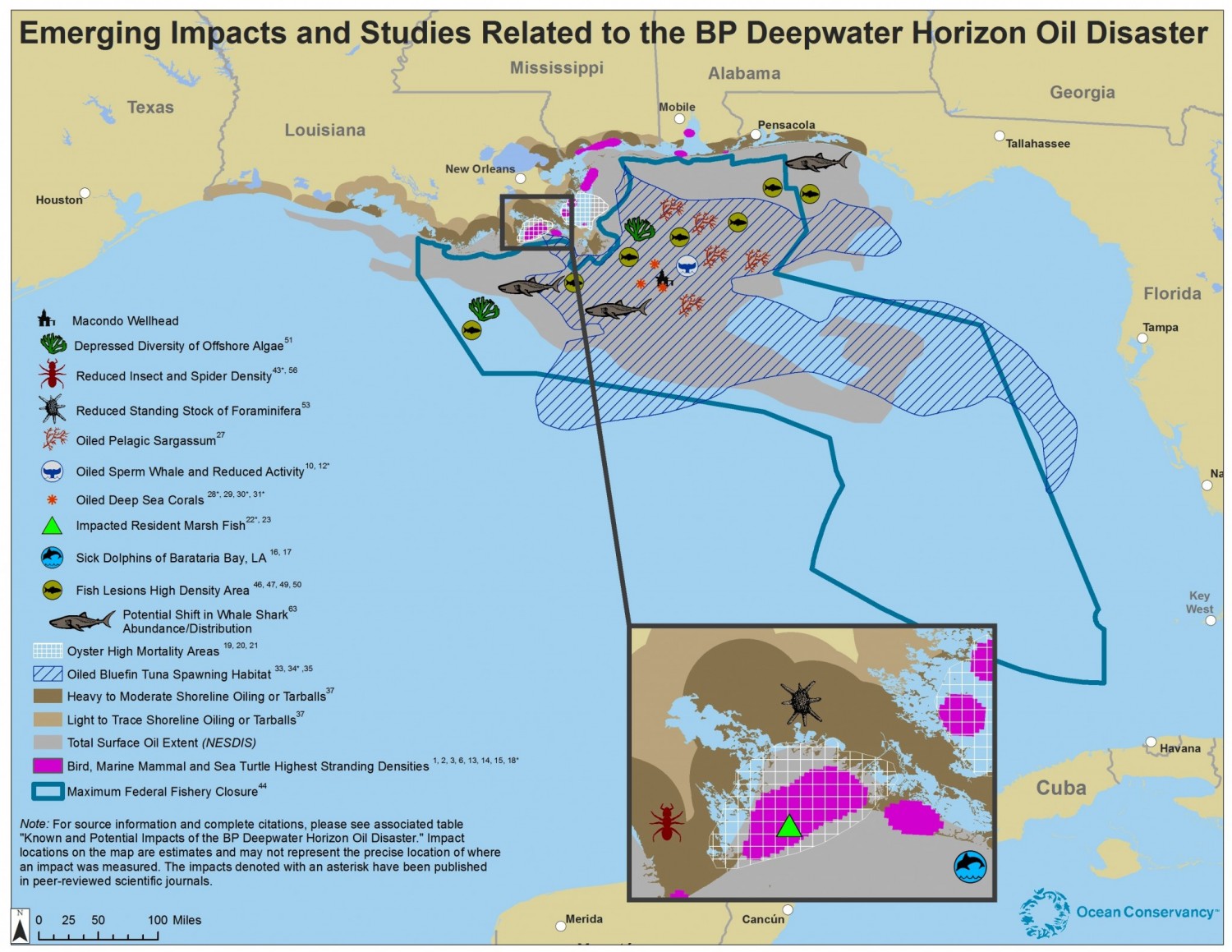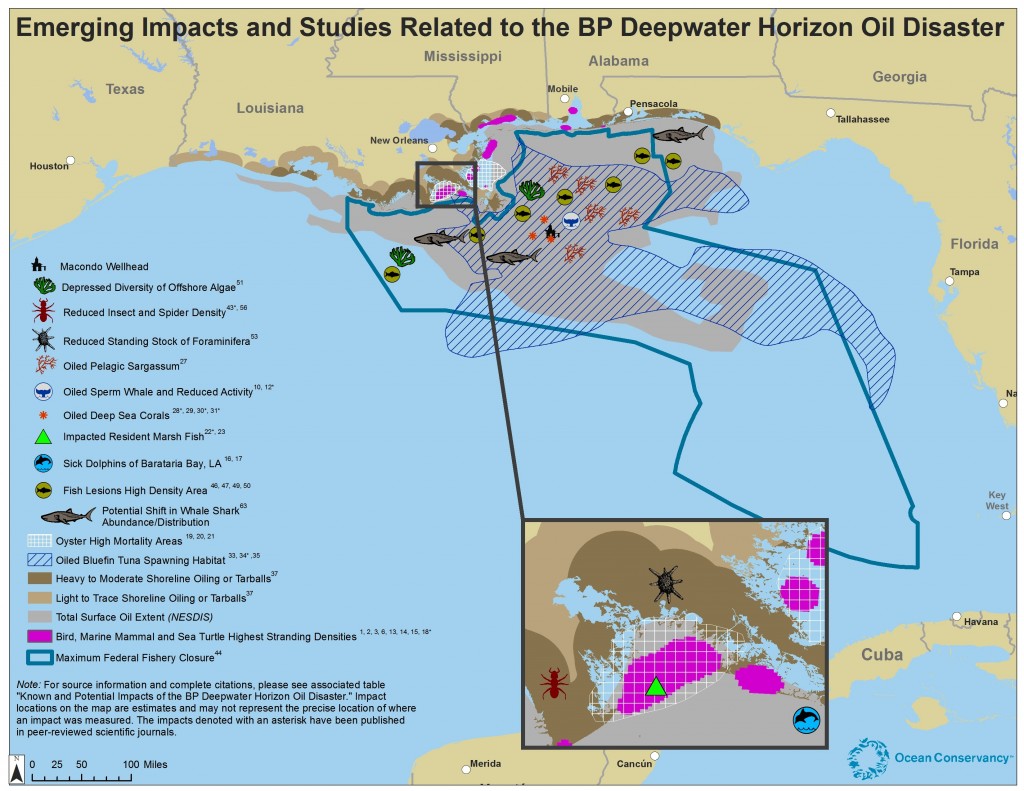Article By: Harvey Rice – www.houstonchronicle.com – February 16, 2015 | Please click here for original article.
Oil from the Deepwater Horizon blowout in 2010 may have created a vast zone on the Gulf of Mexico floor where marine life is much sparser than before toxic petroleum settled there, according to studies presented Monday at a Houston conference on the BP oil spill.
Mate said he suspects the problem has to do with the food chain at the bottom of the Gulf, where there are no longer organisms to support the squid that are sperm whales’ main food source.
Mate said the zone could become a serious problem for marine life if it fails to heal. “My sense is that we’ve got a little bit of a tiger by the tail,” he said. “I think we need to be concerned about how long this lasts.”
The study was one of several presented by scientists at the 2015 Gulf of Mexico Oilspill and Ecosystem Science Conference. The conference at the Westin Galleria Hotel is scheduled to end Thursday.
The spill, the largest in U.S. history, dumped 4.1 million barrels into the Gulf of Mexico, much of it broken up by chemical dispersants that caused the oil to spread in vast underwater plumes and sink to the bottom.
BP studies ongoing
A BP spokesman said, “BP and the trustees continue to study the Gulf’s deepwater environment to gain a better understanding of how the current quantity and composition of deep sea marine species compare to those prior to the accident. Preliminary observations of the sea floor have identified marine life in, on and above the sea floor, both before and after the accident. Work to identify and document any changes in species type or abundance is ongoing.”
The possibility of an undersea expanse with diminished marine life was supported by another study showing a dramatic decline of fish on two oil-stained reefs. The number of fish on the Alabama Alps and the Roughtounged reefs dropped significantly in 2010 and continued to decline in 2011, said K.J. Sulak, a researcher with the U.S. Geological Survey.
Sulak said the decline showed a cascading effect, where the death of organisms lower on the food chain caused a die-off of larger animals that use them for food, which in turn affected the animals that prey on them.
Full impact not yet known
The studies and others presented are only nibbling at the edges of questions about the long-term effects of the oil spill on the health of the Gulf, said Pamela Plotkin, Monday’s conference organizer and director of the Texas Sea Grant College Program at Texas A&M University at College Station.
“We are not going to know the full impact for five to 10 years down the road,” Plotkin said. “We are just beginning to see the evidence that researchers are able to show to the public.”
Much of the key research into the effects of the oil spill is being kept under wraps because it is being funded under the Natural Resource Damage Assessment, which will be used by the U.S. government in court to determine how much BP should pay to restore the Gulf.
The Houston conference follows the Second International Kemp’s Ridley Symposium in November where researchers presented evidence for the first time linking the oil spill to a dramatic decline in the endangered Kemp’s ridley sea turtle.
Some of the studies showed that several types of marine life are recovering.
Above: image courtesy of ecowatch.com







